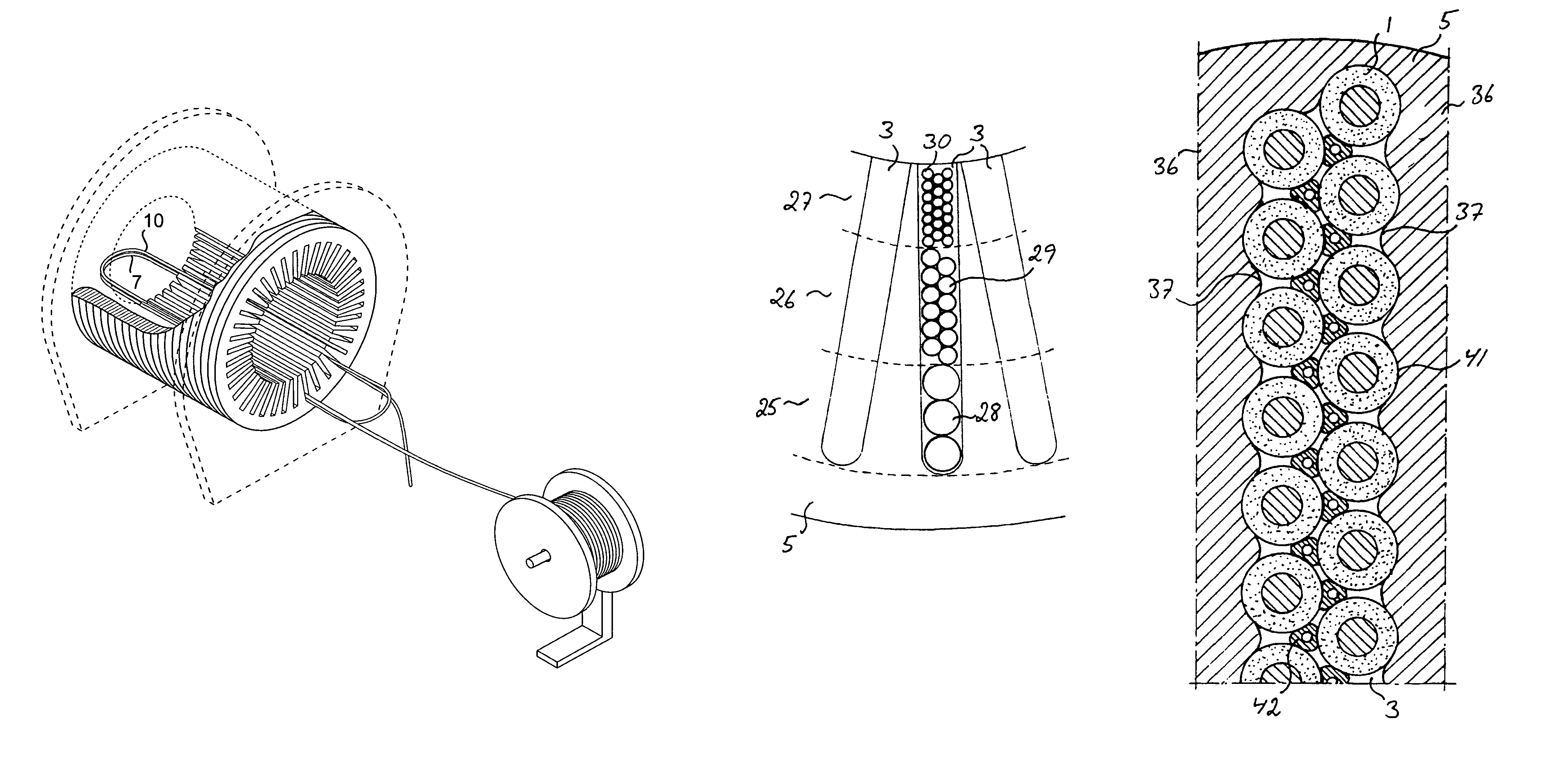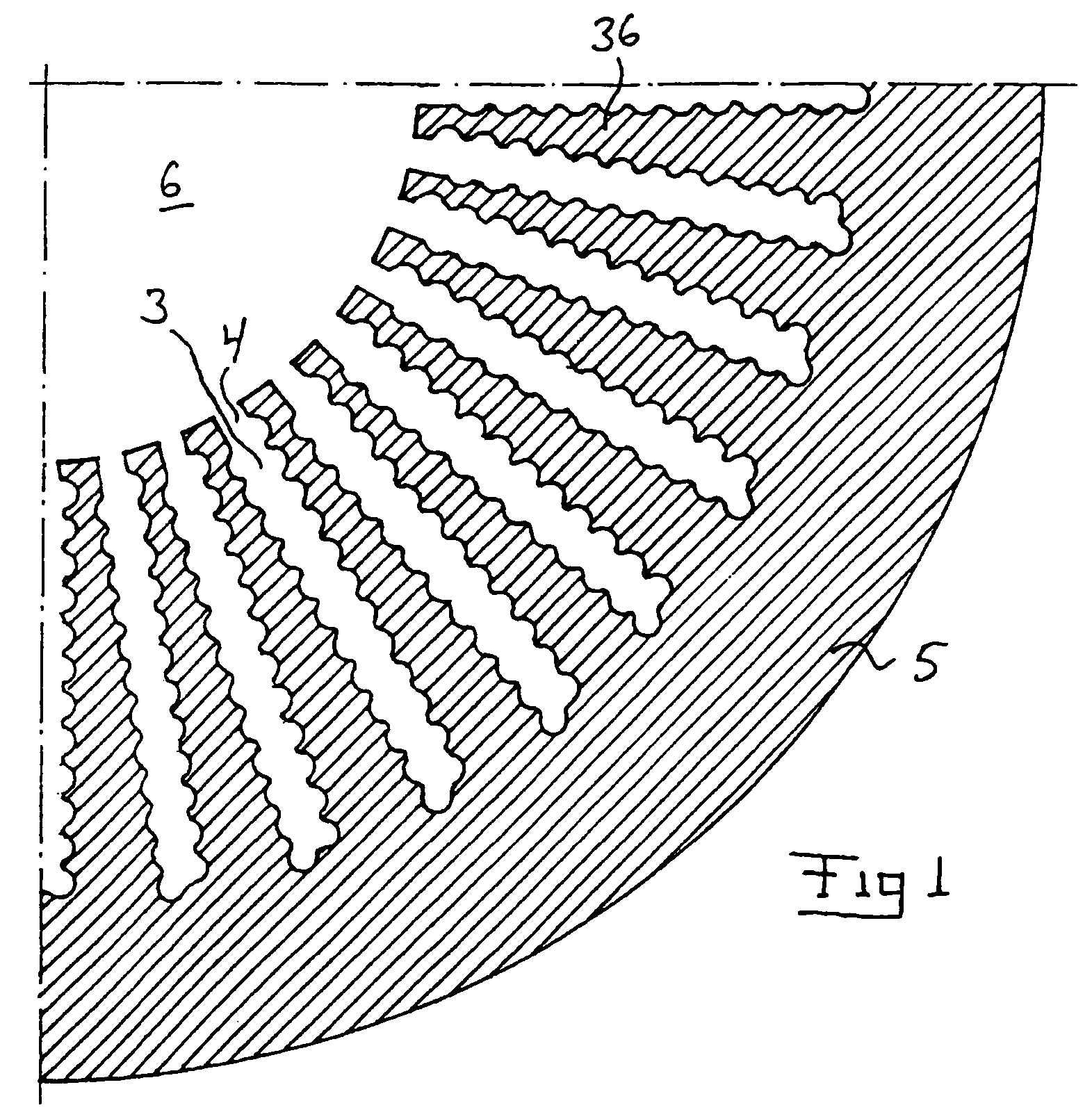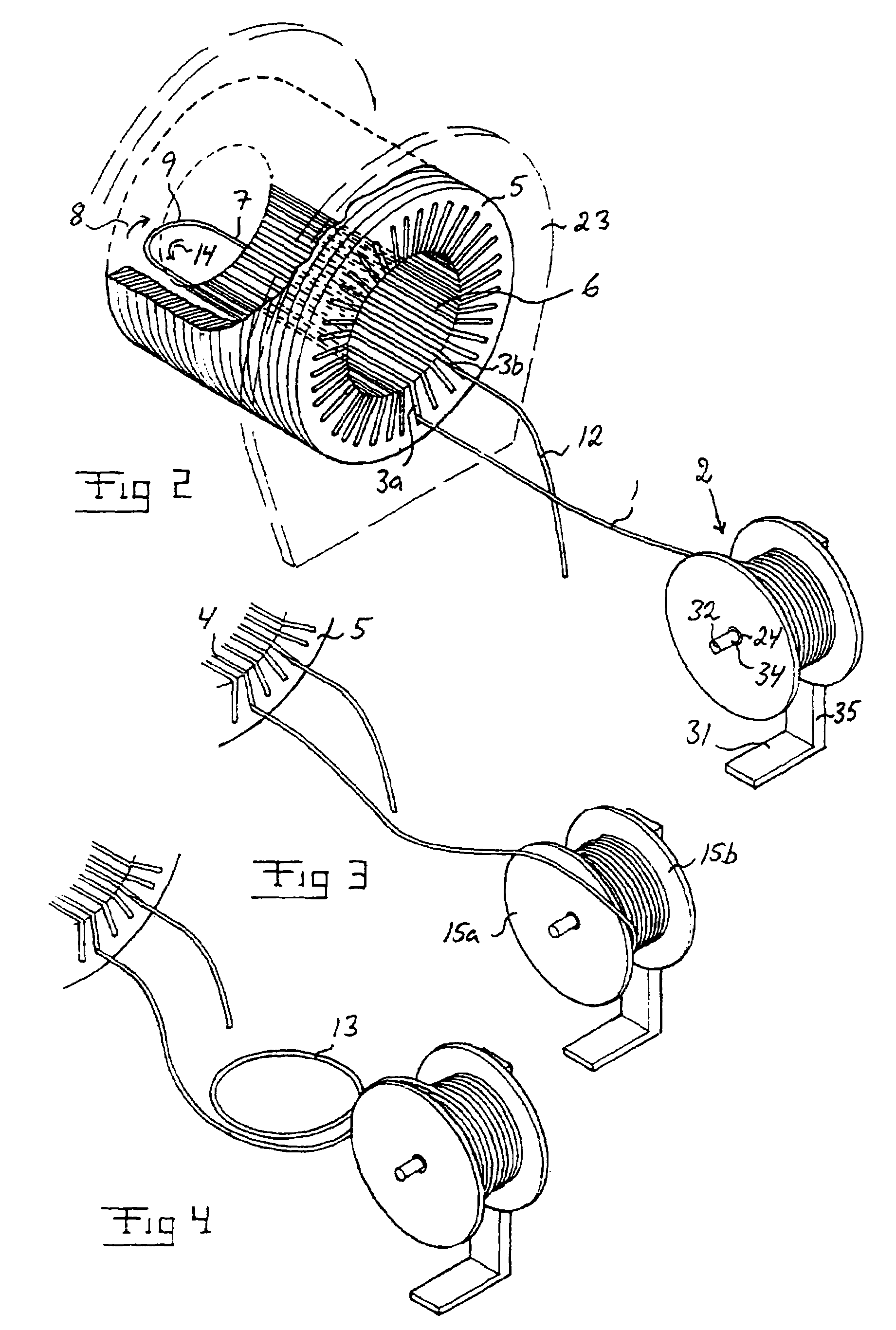Method for installing a stator winding
a technology of stator winding and installation method, which is applied in the field of installing stator winding, can solve the problems of unwieldy, unwindable, and very rapid twisting of cable, and achieve the effect of reducing the risk of winding cabl
- Summary
- Abstract
- Description
- Claims
- Application Information
AI Technical Summary
Benefits of technology
Problems solved by technology
Method used
Image
Examples
Embodiment Construction
[0022]The cable 1 intended to form the type of stator winding here intended, is provided wound on a cable reel 2. This cable 1 is flexible and comprises at least one electric conductor 50 with an envelope 51 (see FIG. 12) capable to confine the electric field generated around the conductor. When the stator winding is to be installed, the cable is drawn out from the cable reel and applied in winding slots 3, which are intended for receiving the stator winding and are formed in a stator core 5. FIG. 1 shows in a schematical cross-section a sector of a stator core 5 provided with so called “double-slots” i.e. each winding slot 3 is designed to receive a cable winding arranged into essentially parallel rows. It is of course also possible to design the winding slots for receiving a cable winding arranged in one row or in more than two parallel rows. These winding slots 3 are delimited by so called stator teeth 36 and extend axially through the stator core 5. Each of the winding slots 3 h...
PUM
| Property | Measurement | Unit |
|---|---|---|
| diameter | aaaaa | aaaaa |
| thickness | aaaaa | aaaaa |
| resistivity | aaaaa | aaaaa |
Abstract
Description
Claims
Application Information
 Login to View More
Login to View More - R&D
- Intellectual Property
- Life Sciences
- Materials
- Tech Scout
- Unparalleled Data Quality
- Higher Quality Content
- 60% Fewer Hallucinations
Browse by: Latest US Patents, China's latest patents, Technical Efficacy Thesaurus, Application Domain, Technology Topic, Popular Technical Reports.
© 2025 PatSnap. All rights reserved.Legal|Privacy policy|Modern Slavery Act Transparency Statement|Sitemap|About US| Contact US: help@patsnap.com



